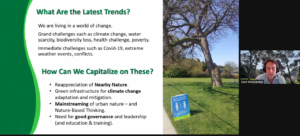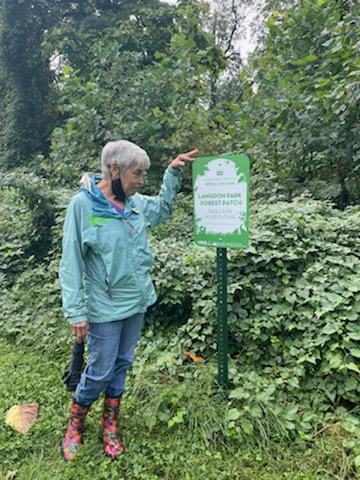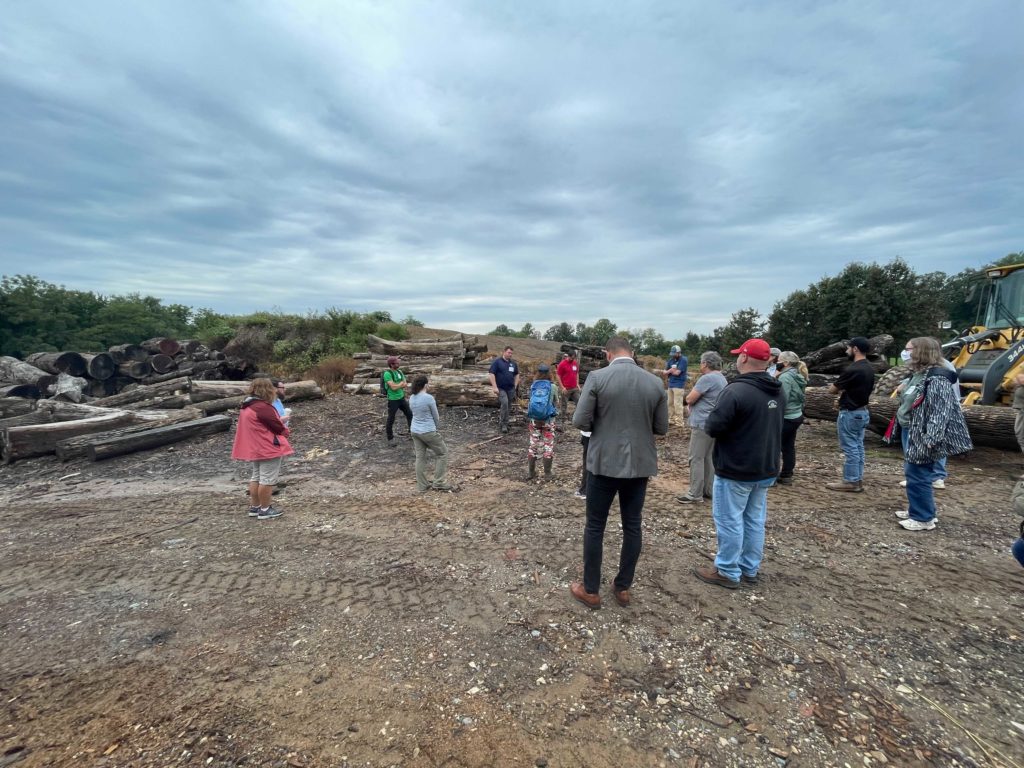
For the tenth anniversary of our annual conference with Montgomery Parks, we knew we needed to do something different. And, with the ongoing pandemic, we also had to do something different. A large indoor conference just wasn’t possible. So we did what city planners, arborists, landscape architects, and community members do every day: we got creative and went outside!
Instead of one-day, in-person, confined conferences, we’re spreading the content and the love across multiple days, locations, and platforms.
This year’s conference had a mix of a half-day virtual session and three different in-person, on-site field sessions. Our virtual session allowed folks from all over the nation (and world) to gather and share their expertise with attendees and partners. The more the merrier!
 Carly Zeiter from Concordia University kicked us off by discussing how trees play an outsized role in shaping the ecological future of our cities. We particularly loved her closing words that in order to continue to live on this earth, we’ll need to live in cities, and cities need to be livable. Amen!
Carly Zeiter from Concordia University kicked us off by discussing how trees play an outsized role in shaping the ecological future of our cities. We particularly loved her closing words that in order to continue to live on this earth, we’ll need to live in cities, and cities need to be livable. Amen!
 Up next was Kevin Smith of the U.S. Forest Service whose research and, therefore, the presentation was about the simple but challenging fact that decay is a part of life for trees. He discussed the delicate dance urban foresters play between healthy land management (letting trees decay and age) versus urban person responsibility (not endangering people or property).
Up next was Kevin Smith of the U.S. Forest Service whose research and, therefore, the presentation was about the simple but challenging fact that decay is a part of life for trees. He discussed the delicate dance urban foresters play between healthy land management (letting trees decay and age) versus urban person responsibility (not endangering people or property).
 Closing out the day was Cecil Konijnendijk from the University of British Columbia who discussed how cities can incorporate nature-based solutions, specifically trees, to become more resilient and healthy. Talk about relevant! Quite a few climate change effects were discussed, but we appreciated his comment that you don’t need to be in Dubai or Riyadh to experience extreme heat. Anyone who has spent a July in DC can agree with that. We also enjoyed his closing words, “it’s not nice to have urban nature and trees, it’s necessary.”
Closing out the day was Cecil Konijnendijk from the University of British Columbia who discussed how cities can incorporate nature-based solutions, specifically trees, to become more resilient and healthy. Talk about relevant! Quite a few climate change effects were discussed, but we appreciated his comment that you don’t need to be in Dubai or Riyadh to experience extreme heat. Anyone who has spent a July in DC can agree with that. We also enjoyed his closing words, “it’s not nice to have urban nature and trees, it’s necessary.”
Our field sessions through the DMV area are designed to be small, in-depth looks at urban forestry in action and are meant to focus on something that has been lacking over the last eighteen months – intimate, in-person opportunities for collaboration and knowledge sharing. The small size of these also kept them safe.
Our very first field session discussed any and all things urban wood reuse at Montgomery County’s Pope Farm. We heard the similarities and differences between programs throughout their county, the District, and even Baltimore. We learned about the process of wood reclamation and how Montgomery County works to repurpose fallen or removed trees from the city into unique lumber for construction, furniture making, art, and much more. The best part of the day though was, hands down was the live sawmill demonstration!
We headed across the river for our second field session, where we took a look at tree pit design across the city of Arlington. This talk was led by Vincent Verweij, Arborist and Urban Forestry Manager with the Arlington Department of Parks and Recreation. We took a stroll down the sidewalks of the city looking at different styles of tree boxes and discussing the benefits and pitfalls of each. We learned about proper tree box design for optimum tree growth and saw a few older tree boxes that we guessed may not entirely be up to today’s standards. We also turned our eyes to the sky to catch a peek of a few trees on roofs, prompting engaging discussions about the challenges of tree maintenance up in the sky!
 A little rain never hurt anyone and especially didn’t dampen the spirits of our final field session. Held at DC’s very own Langdon Park we were thrilled to join community members and the Urban Forestry Division’s very own Earl Eutsler, Dr. Kasey Yturralde, and Robert Corletta to explore all the unusual and innovative programming throughout the park – Ward 5’s September 11 memorial cherry tree grove, the Pop-Up Arboretum, the Chuck Brown Memorial and more. We also were lucky enough to hear from Delores Bushong and Mary Pat Rowan, two local residents who have been working tirelessly to restore a forest patch in Langdon Park. They have been clearing invasives and working to promote native tree growth, and have been partnering with Casey Trees and DDOT to make this effort possible. It was encouraging to hear and share so much more about the hard work we do to include park users and nearby residents in the design, planning, and upkeep of the park.
A little rain never hurt anyone and especially didn’t dampen the spirits of our final field session. Held at DC’s very own Langdon Park we were thrilled to join community members and the Urban Forestry Division’s very own Earl Eutsler, Dr. Kasey Yturralde, and Robert Corletta to explore all the unusual and innovative programming throughout the park – Ward 5’s September 11 memorial cherry tree grove, the Pop-Up Arboretum, the Chuck Brown Memorial and more. We also were lucky enough to hear from Delores Bushong and Mary Pat Rowan, two local residents who have been working tirelessly to restore a forest patch in Langdon Park. They have been clearing invasives and working to promote native tree growth, and have been partnering with Casey Trees and DDOT to make this effort possible. It was encouraging to hear and share so much more about the hard work we do to include park users and nearby residents in the design, planning, and upkeep of the park.
Whether they focused on planting or pruning best practices, shared operational insights or gave us a peek into their cutting edge research, we’re thankful to each and every presenter that joined us in person or online.
Most of all – thank you! Having such vibrant and interested attendees is the best part of every summit, but was a definite highlight in our tenth year. We’ll see you next year!


